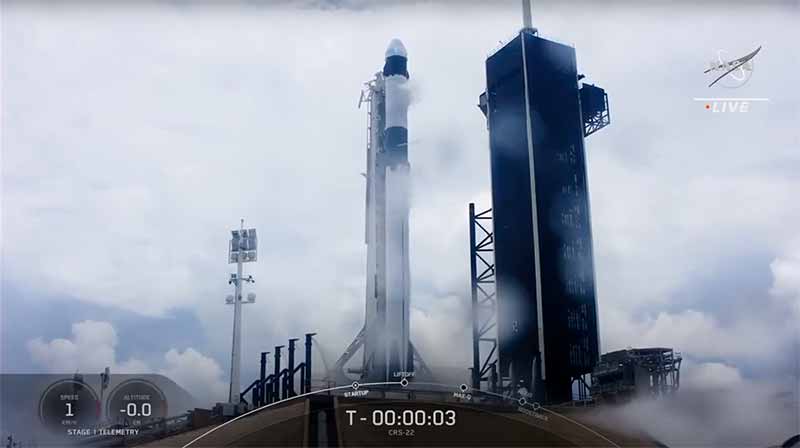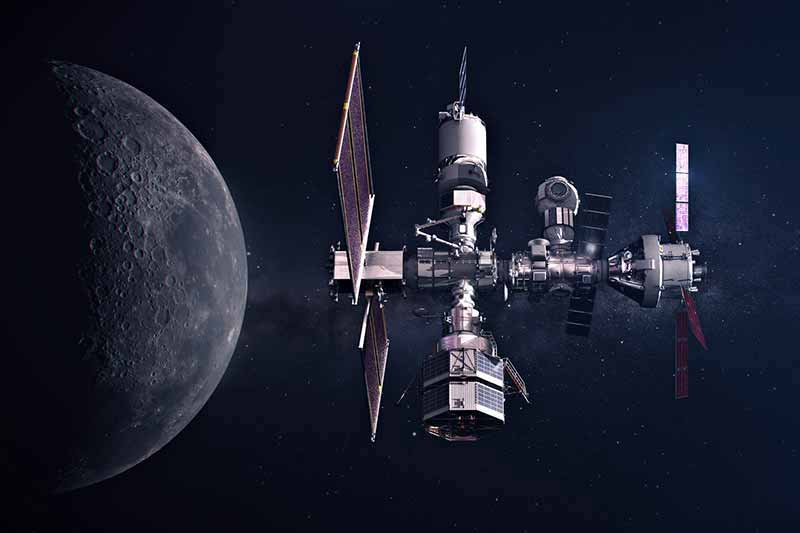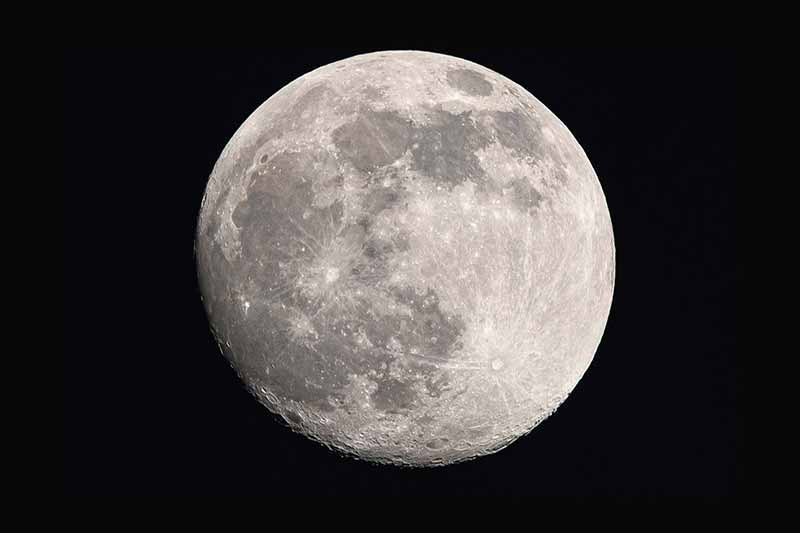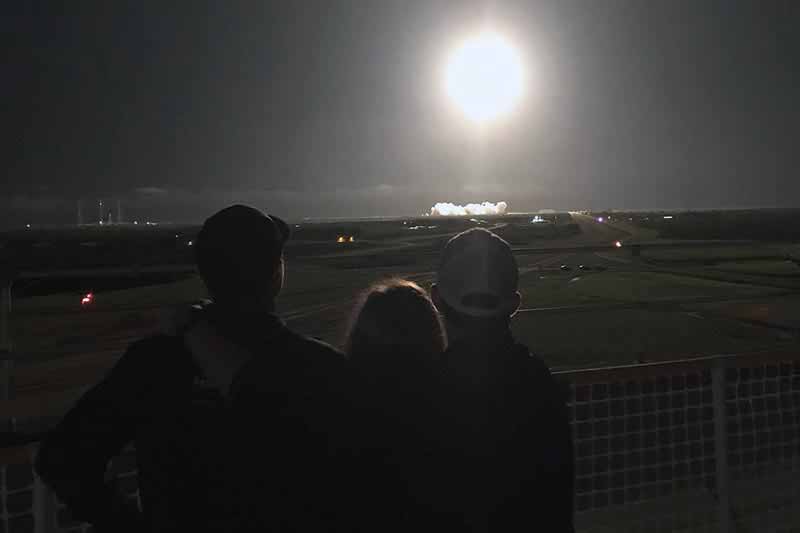Tengfei Luo had certain hypotheses about what would happen during his scientific experiment, conducted in June aboard the International Space Station, to form water vapor bubbles in an environment without gravity.
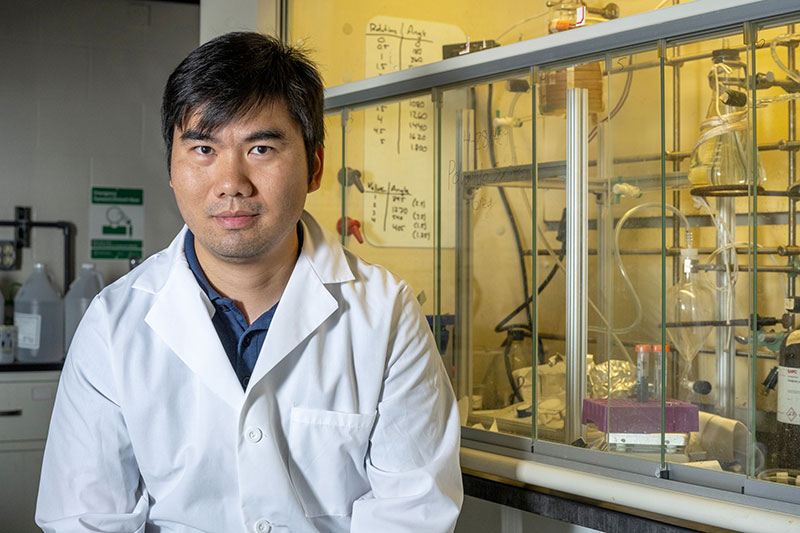
His goal was to engineer material surfaces to make bigger bubbles that adhere to the surface rather than grow buoyant and detach like they do on Earth. He ended up getting both less and more than he expected in his first beyond-this-world experience.
“What I found interesting is that the bubbles did detach,” Luo said of the near real-time videos beamed back from space. “They did grow bigger than what we saw on Earth. There’s no gravity there, which means we’re probably seeing the physics we would like to see. There is a competition between other factors that led them to detach.”
Against expectations, Luo said, the bubbles grew slowly but suddenly detached at once while still at different sizes.
“If my previous hypothesis was correct, the bubbles will detach when they grow to a certain size,” he said. “But that didn’t seem to be the case, so we don’t know what’s going on and we need to find out.”
A SpaceX Falcon 9 rocket launched from Cape Canaveral on June 3, 2021. It connected with the ISS two days later, and astronauts inserted the experiment the following day. It returned to Earth on another resupply flight about a month later.
Luo ultimately hopes to use bubbles to concentrate biomarkers in blood samples so that cancer can be detected and treated far earlier. To get there, the professor in the Department of Aerospace and Mechanical Engineering at Notre Dame needs to better understand the competing physical forces involved in the dynamics of bubbles.
In a time when science is under assault from people who doubt its advice about everything from masks to vaccines, Luo is excited that his experiment did not follow his expectations.
Instead, it opened up new doors of inquiry.
Besides unexpected results, there was a glitch in the experiment. The camera inside the fully automated, self-contained experiment box failed to move to three different bubble-blowing surfaces down the line after capturing video of the first one.
Still, Luo estimates he accomplished about 70 percent of his goals.
“We got some valuable information,” Luo said. “I think it’s a good start. We do believe what we learned from the attempt can potentially lead us to design better things in biodetection.”
Competing Forces
Luo was born in China and came to the United States in 2005 to get his doctoral degree at Michigan State University. After postdoctoral work at MIT, he landed a job at Notre Dame and started a lab studying molecular-level energy and mass transport.
Renamed the MONSTER (Molecular/Nano-Scale Transport and Energy Research) Lab in 2019, Luo’s group hopes to improve diagnostic capabilities for life-threatening diseases, including certain cancers, by better understanding how bubbles form, grow and detach from solid surfaces with different nanoscale features. If cancerous cells can be collected through bubbles when they are still at low concentrations, then this method could increase sensitivity and improve early cancer detection.
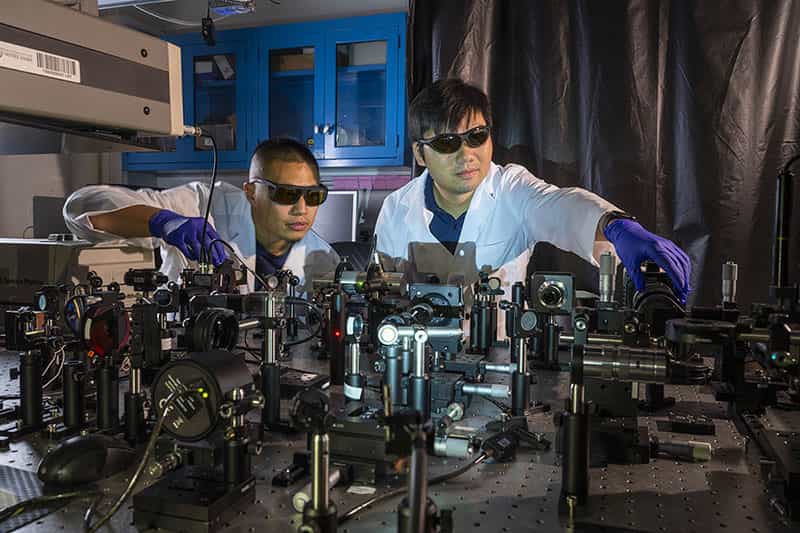
In a 2020 study published in Advanced Materials Interfaces, Luo successfully used laser heating to generate bubbles in a solution containing biological molecules. The researchers found they could attract those biomolecules to the bubble and deposit them on the surface, creating a “highly concentrated island.” The National Science Foundation provided funding for biosensing research.
“We are proposing to use this bubble method to concentrate when we collect, for example, a blood or saliva sample,” Luo said. “We want to concentrate the biomolecules to a small location so that we have higher density of these biomarkers so that they can be more easily detected.”
The biomarkers take some time to transport to the surface of the bubble in a phenomenon called Marangoni flow, so the bigger the bubble and the longer it can be maintained without detaching, the better. The biomarkers then quickly drain to the base of the bubble and are deposited there, where they can be measured.
Several competing factors can influence bubble dynamics: gravity, which affects the buoyancy of a bubble; capillary force, which is at the interface of the bubble and a solid surface; and the minimization of surface tension due to the bubble trying to be spherical in the liquid. Luo’s experiment aboard the ISS tested how bubbles behave in the absence of gravity.
“The capillary force pins the bubble on the surface,” Luo said. “But the bubble wants to complete its perfect spherical shape. And then, under gravity you have the surface tension and buoyancy working together. We cannot decouple these forces. But on the ISS, we’re able to decouple them. Then we can better understand how the bubble dynamics get influenced by these different factors.”
The unexpected detachment of his bubbles in the ISS experiment calls for further study, Luo said. That will include detailed analysis of high-resolution videos and terrestrial experiments.
“We want to find out what is the key mechanism that’s dominating the bubble detachment,” Luo said. “If the capillary force is the one, then that would give us opportunity to tune the surface condition, so that the bubble can grow larger, and the larger the bubble we get the more sensitive our biosensors can get.”
Liftoff Into Space
Luo has been working toward the experiment on the ISS since about 2015. His team realized zero-gravity spaces that can be artificially created would not last long enough for his experiments.
“Being a Notre Dame grad, I wanted to see Notre Dame really move forward in space research for different types of benefits, especially back here on Earth.” —Jonathan Volk
Around the same time, Jonathan Volk, a Notre Dame engineering alumnus working at the Center for the Advancement of Science in Space (CASIS) came to Notre Dame to promote scientific work on the ISS. Volk set up a meeting with former dean Peter Kilpatrick and Mark McCready, then chair of chemical and biomolecular engineering, and several interested faculty.
“Being a Notre Dame grad, I wanted to see Notre Dame really move forward in space research for different types of benefits, especially back here on Earth,” said Volk, who is now director of commercialization strategies for a consulting company called Space Commerce Matters, which promotes science and commercialization in space. “The experiment Tengfei wanted to propose has great terrestrial applications in health care, looking at nanoparticles, and also for water purification.”
CASIS focuses on space research with terrestrial applications, while the better-known NASA focuses on research and exploration affecting space. Volk gave several examples of past CASIS projects: Proctor and Gamble improving the shelf life of their cleaning products, Delta researching droplet formulation to use less water in showers, and Goodyear experimenting in silica to make tires more environmentally friendly.
Luo received funding from CASIS and began work on the ISS project in 2018, but encountered a number of delays, including postponement due to the COVID-19 pandemic. For the experiment, he needed a device that could create a water bubble and record visuals and readings of the bubble’s behavior without the use of a laser or biomolecules — which would have cost more and created safety hazards.
An astronaut gives a thumbs up before removing the CubeLab after the ND experiment is complete.
“We are doing fundamental research,” Luo said. “We design the experiment, but somebody needs to convert that idea into a fully automated, flight-ready apparatus.”
Luo said the first implementation partner got halfway through the project and said it would need another million dollars to finish. So he found a new partner, Space Tango, to build a container lab that can be inserted into a slot on the ISS and run on its own. Space Tango specializes in designing and building automated hardware for use in space.
The experiment is housed in a small cube, known as a CubeLab, which is equipped with four fluid compartments, thermal capabilities to heat the surfaces, and four different copper surfaces with different scales of structures, or engineered surfaces, ranging from 100 nanometers to a few microns.
“We think there may be a structure size that can provide the optimal pinning force to grow a larger, more stable bubble,” he said.
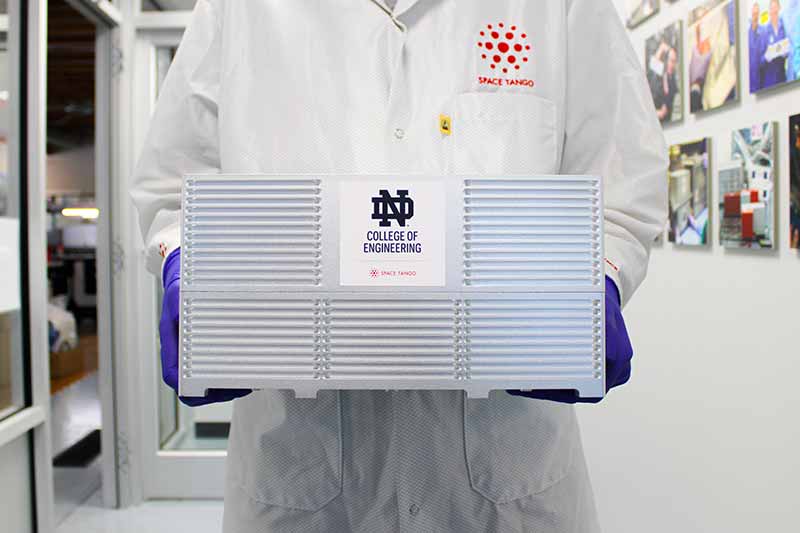
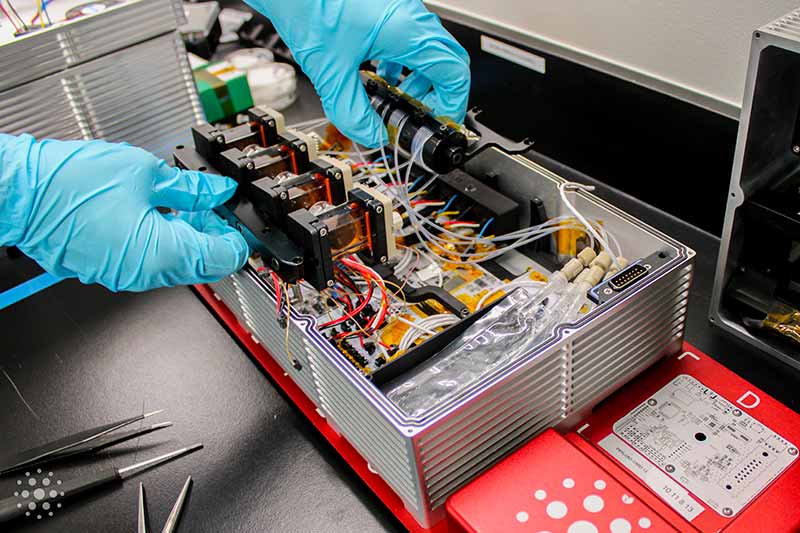
The CubeLab experiments on each substrate only took a few minutes, but they had to be repeated several times, and there was a cooling time of several hours between each bubble heating. The total run time was about three weeks. Unfortunately, a camera malfunction prevented it from moving to the other three substrates to record video for comparative purposes. Luo and his team did receive temperature and pressure readings as well as heating power values, in addition to high-resolution videos of the first position with the smallest nanostructure surface.
“We are going to do a deep dive into the videos in the next two weeks to see what interesting things we can find,” Luo said in August. “The data from the one surface we got can already shed light on the importance of gravity on the bubble dynamics.”
Luo isn’t deterred. He said the experience has been unique and the results interesting. He understands that scientific experiments inherently involve risk in order to push the boundaries of human knowledge. Space Tango has indicated it plans to send the CubeLab to the ISS again. In the meantime, Luo may devise a workaround here on Earth.
“We can potentially develop some computational models with certain assumptions and use the ISS experimental results to validate these models,” Luo said. “We then use these models to predict what would have happened for other surfaces that we were not able to capture.”
